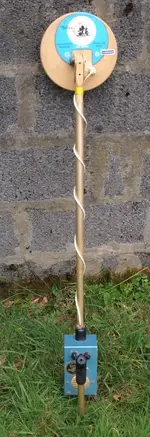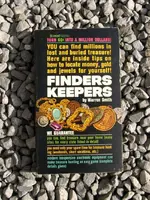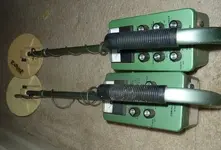Detecting started on a small scale in the 60's. By 1973 "JoanAllen" (which ended up being the biggest detector shop in the country within a few years) estimated that 30,000 were detecting on and off. Joan Allen herself was a coin dealer originally who was asked to display a few homemade detectors in her shop window in 1969/70. They sold straight out and the boom followed.
Mine detectors were used by a few but had to be modified. Some had an adjustment on the coil which improved sensitivity to smaller items. As the industry grew Best Electronics, C-Scope, Q-Tone, Fieldmaster, Location Technology, Protovale grew to fill the demand and Whites, Fisher, Gardiner began to be imported in larger numbers. John Webb, Tony White, Tony Hammond were a few of the more prominate detector users.
Hunting sites were anywhere you liked as most farmers/landowners didn't believe detectors would actually work. Finds were the same as today with the drawback that detector performance was so bad, especially when discriminators first arrived, that many stuck to the use of pulse machines and just had to live with a few thousand years of iron littering the ground almost everywhere. Very small items like almost foil thickness silver coins remained difficult to locate but U.S. advances in gold hunting machines helped. The Tesoro Eldorado for instance proved very successful at finding items other detectors would pass over without a beep.
I dread to think how many are detecting now which is making it difficult to find land. I was on a small beach this morning at 6.00 and there were ten or eleven already searching !






